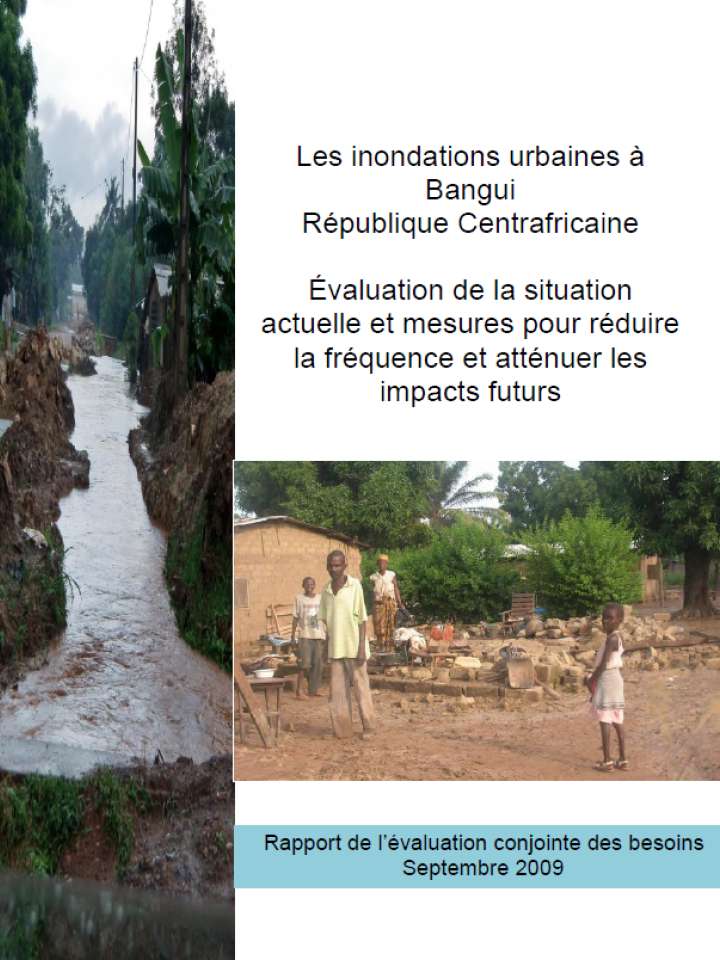Urban flooding in Bangui, Central African Republic - Joint Needs Assessment to assess and mitigate the impacts of recurrent flooding
Urban floods in the southwestern neighborhoodsof Bangui on June 14-15 and July 3-4, 2009 left 14,500 people homeless. Over 40 percent of victims were under 14 years old, and 57 percent were female. At least two people died, while many other lives were exposed to the increased threats of malaria, diarrhea, and other water-borne diseases. The 2009 floods is one among the many floods that washes away thousands of houses annually.
In the aftermath of 2009 Bangui floods, the Government of Central African Republic constituted a team of different government departments under the leadership of the Ministry of Planning, Economy and International Cooperation. The government also requested assistance from various international agencies, including the World Bank to participate in damage and loss assessment, and leverage technical and financial resources from the Global Facility for Disaster Reduction and Recovery (GFDRR). The mandate included an assessment of the recurring flood damages and developing strategies for medium and long-term interventions. As a response, the World Bank, with GFDRR’s support, provided timely resources and sent a team to assist the Government of the Central African Republic in preparing a Joint Needs Assessment report. Other international agencies that supported the assessment were the United Nations Development Program (UNDP), United Nations Children’s Emergency Fund (UNICEF), the UN Office for the Coordination of Humanitarian Affairs (UNOCHA), the European Commission, the French Development Agency (AFD) and other partners.
